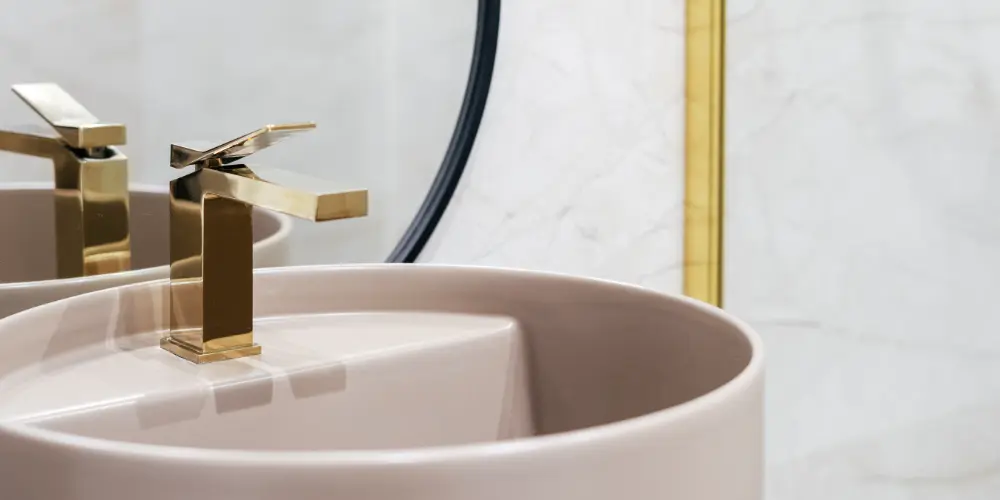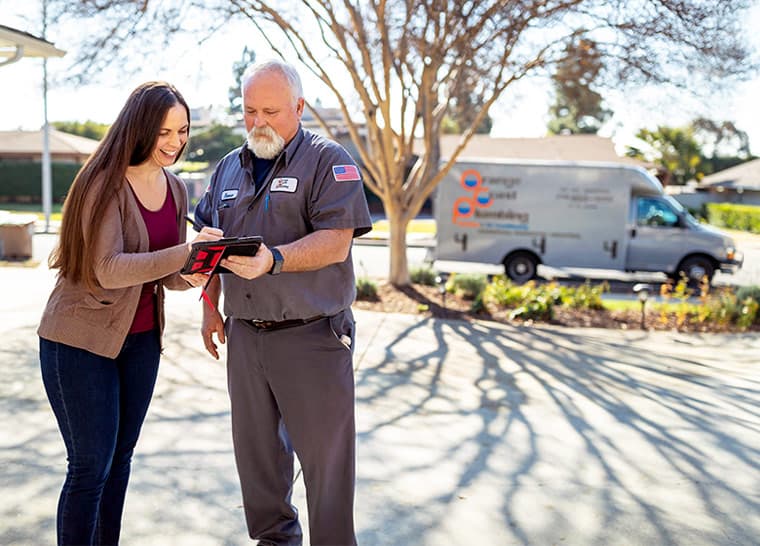Most people understand the mechanics of a simple compression faucet and know what to do when something goes wrong. Leaky faucet? Replace the washer!
A cartridge faucet is more of a mystery, but the good news is that replacing a cartridge is a straightforward repair that can save you time and money.
Let us walk you through the steps.
How Does a Faucet Cartridge Work?
A faucet cartridge acts like a valve, allowing water to pass through when it’s open and stopping the flow when it’s closed. Different types of faucets use different cartridges, but the principle remains the same.
- A cartridge regulates water flow and temperature.
- Single-handle and double-handle faucets have different cartridge designs.
- It’s usually made from plastic, brass, or ceramic for durability.
Signs of a Faulty Cartridge
A high-quality cartridge made from durable materials like brass or ceramic can last anywhere from 5 to over 10 years. However, mineral deposits from hard water can shorten its lifespan.
Symptoms of a failing cartridge include:
- Water dripping from the spout even when the faucet is turned off.
- Difficulty moving the handle.
- Difficulty adjusting water temperature or flow.
- Uneven water pressure.
Replacing a Faucet Cartridge Step-by-Step
Step 1: Gather Your Tools & Supplies
- Adjustable wrench
- Screwdriver (Phillips and flat-head)
- Allen wrench
- Utility knife
- Replacement cartridge
- Plumber’s grease
- Towel or rag
Step 2: Turn Off Water Supply
Locate the shut-off valves under the sink and turn them clockwise to stop the water flow. This prevents accidental spills while you work.
Step 3: Remove Faucet Handle
- Use an Allen wrench or screwdriver to remove the screw holding the handle in place.
- Gently pull the handle off to reveal the cartridge.
Step 4: Remove the Retaining Clip
- Use pliers to remove the retaining clip or nut holding the cartridge. Be careful not to damage any parts.
Step 5: Extract the Old Cartridge
- Use your pliers to pull the old cartridge straight out. If it’s stuck, wiggle it gently until it loosens.
- Inspect the cartridge and faucet body for any debris or build-up and clean it if it can be salvaged.
Step 6: Install the New Cartridge
- Apply plumber’s grease to the O-rings on the new cartridge.
- Insert the new cartridge into the faucet body, ensuring it aligns correctly.
- Replace the retaining clip or nut.
Step 7: Reassemble the Faucet
- Reattach the handle and secure it with the screw.
- Turn the water supply back on and check for leaks.
Step 8: Test the Faucet
- Turn the faucet on and off, checking for smooth operation and a watertight seal.
Maintaining Your New Cartridge
To prolong the life of your new cartridge, follow these simple maintenance tips:
- Clean mineral deposits regularly with a vinegar solution.
- Use a water softener to prevent build-up.
- Inspect and replace worn parts as needed.
FAQs: Replacing a Faucet Cartridge
Q: How often should I replace my faucet cartridge?
Typically, a faucet cartridge lasts between 5 and 10 years, depending on use and water quality.
Q: Can I use any cartridge for my faucet?
No, cartridges are specific to the brand and model of your faucet. Purchase a compatible replacement.
Q: How much does a faucet cartridge cost?
A faucet cartridge can cost anywhere from $10 to $50, depending on the brand and model. Research and compare prices before making a purchase.
Q: What if my faucet still leaks after replacing the cartridge?
There might be an issue with the O-rings or seals. Inspect these components and replace them if necessary.
Q: How much time does it take to replace a faucet cartridge?
It typically takes 30 minutes to an hour, but the exact time can vary depending on your experience level and the type of faucet.
Q: Can I replace a faucet cartridge myself, or should I hire a professional?
With the right tools and instructions, most homeowners can replace a faucet cartridge. Follow the steps outlined in this guide, and you’ll save on labor costs.
Q: Do all faucet cartridges require plumber’s grease during installation?
While it’s not mandatory for all cartridges, applying plumber’s grease to the O-rings can make the installation smoother and help prevent future leaks. It’s a recommended step for optimal performance.
Q: What should I do if the cartridge is stuck and won’t come out?
If the cartridge is stuck, apply a few drops of penetrating oil and let it sit for a few minutes. Gently wiggle the cartridge with pliers to loosen it. If it remains stuck, invest in a cartridge puller, a valuable tool for your plumbing toolkit.
Q: Is it necessary to turn off the main water supply if I can’t find the local shut-off valves?
Ideally, you should use the local shut-off valves under the sink. However, if you can’t locate them, you may need to turn off the main water supply to your home to prevent water flow while working.
Q: Are there any precautions I should take when cleaning mineral deposits?
Use a mild vinegar solution and avoid abrasive scrubbers. Harsh chemicals or abrasive materials can damage the faucet’s finish and internal components.


